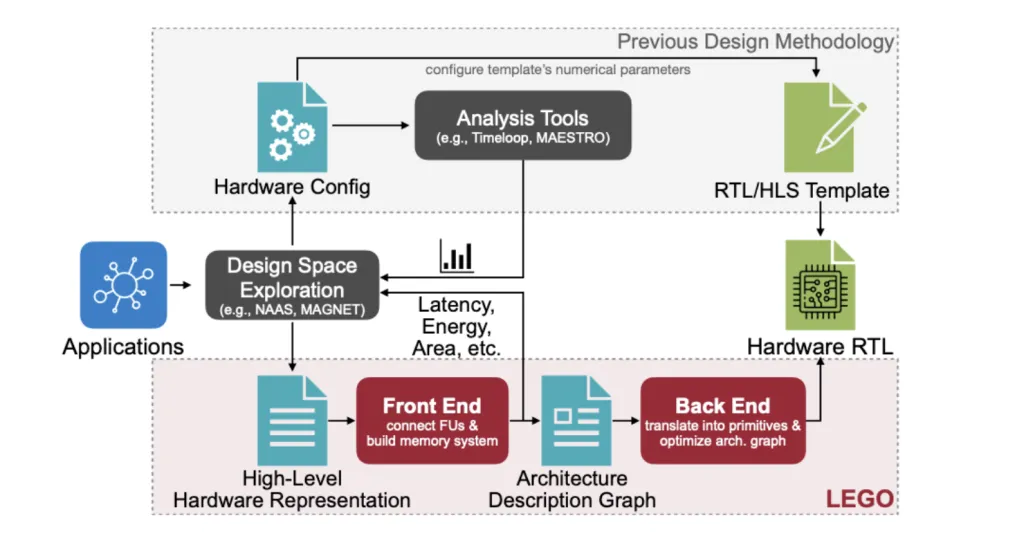Building AI agents is 5% AI and 100% software engineering
Production-grade agents live or die on data plumbing, controls, and observability—not on model choice. The doc-to-chat pipeline below maps the concrete layers and why they matter. What is a “doc-to-chat” pipeline? A doc-to-chat pipeline ingests enterprise documents, standardizes them, enforces governance, indexes embeddings alongside relational features, and serves retrieval + generation behind authenticated APIs with human-in-the-loop (HITL) checkpoints. It’s the reference architecture for agentic Q&A, copilots, and workflow automation where answers must respect permissions and be audit-ready. Production implementations are variations of RAG (retrieval-augmented generation) hardened with LLM guardrails, governance, and OpenTelemetry-backed tracing. How do you integrate cleanly with the existing stack? Use standard service boundaries (REST/JSON, gRPC) over a storage layer your org already trusts. For tables, Iceberg gives ACID, schema evolution, partition evolution, and snapshots—critical for reproducible retrieval and backfills. For vectors, use a system that coexists with SQL filters: pgvector collocates embeddings with business keys and ACL tags in PostgreSQL; dedicated engines like Milvus handle high-QPS ANN with disaggregated storage/compute. In practice, many teams run both: SQL+pgvector for transactional joins and Milvus for heavy retrieval. Key properties Iceberg tables: ACID, hidden partitioning, snapshot isolation; vendor support across warehouses. pgvector: SQL + vector similarity in one query plan for precise joins and policy enforcement. Milvus: layered, horizontally scalable architecture for large-scale similarity search. How do agents, humans, and workflows coordinate on one “knowledge fabric”? Production agents require explicit coordination points where humans approve, correct, or escalate. AWS A2I provides managed HITL loops (private workforces, flow definitions) and is a concrete blueprint for gating low-confidence outputs. Frameworks like LangGraph model these human checkpoints inside agent graphs so approvals are first-class steps in the DAG, not ad hoc callbacks. Use them to gate actions like publishing summaries, filing tickets, or committing code. Pattern: LLM → confidence/guardrail checks → HITL gate → side-effects. Persist every artifact (prompt, retrieval set, decision) for auditability and future re-runs. How is reliability enforced before anything reaches the model? Treat reliability as layered defenses: Language + content guardrails: Pre-validate inputs/outputs for safety and policy. Options span managed (Bedrock Guardrails) and OSS (NeMo Guardrails, Guardrails AI; Llama Guard). Independent comparisons and a position paper catalog the trade-offs. PII detection/redaction: Run analyzers on both source docs and model I/O. Microsoft Presidio offers recognizers and masking, with explicit caveats to combine with additional controls. Access control and lineage: Enforce row-/column-level ACLs and audit across catalogs (Unity Catalog) so retrieval respects permissions; unify lineage and access policies across workspaces. Retrieval quality gates: Evaluate RAG with reference-free metrics (faithfulness, context precision/recall) using Ragas/related tooling; block or down-rank poor contexts. How do you scale indexing and retrieval under real traffic? Two axes matter: ingest throughput and query concurrency. Ingest: Normalize at the lakehouse edge; write to Iceberg for versioned snapshots, then embed asynchronously. This enables deterministic rebuilds and point-in-time re-indexing. Vector serving: Milvus’s shared-storage, disaggregated compute architecture supports horizontal scaling with independent failure domains; use HNSW/IVF/Flat hybrids and replica sets to balance recall/latency. SQL + vector: Keep business joins server-side (pgvector), e.g., WHERE tenant_id = ? AND acl_tag @> … ORDER BY embedding <-> :q LIMIT k. This avoids N+1 trips and respects policies. Chunking/embedding strategy: Tune chunk size/overlap and semantic boundaries; bad chunking is the silent killer of recall. For structured+unstructured fusion, prefer hybrid retrieval (BM25 + ANN + reranker) and store structured features next to vectors to support filters and re-ranking features at query time. How do you monitor beyond logs? You need traces, metrics, and evaluations stitched together: Distributed tracing: Emit OpenTelemetry spans across ingestion, retrieval, model calls, and tools; LangSmith natively ingests OTEL traces and interoperates with external APMs (Jaeger, Datadog, Elastic). This gives end-to-end timing, prompts, contexts, and costs per request. LLM observability platforms: Compare options (LangSmith, Arize Phoenix, LangFuse, Datadog) by tracing, evals, cost tracking, and enterprise readiness. Independent roundups and matrixes are available. Continuous evaluation: Schedule RAG evals (Ragas/DeepEval/MLflow) on canary sets and live traffic replays; track faithfulness and grounding drift over time. Add schema profiling/mapping on ingestion to keep observability attached to data shape changes (e.g., new templates, table evolution) and to explain retrieval regressions when upstream sources shift. Example: doc-to-chat reference flow (signals and gates) Ingest: connectors → text extraction → normalization → Iceberg write (ACID, snapshots). Govern: PII scan (Presidio) → redact/mask → catalog registration with ACL policies. Index: embedding jobs → pgvector (policy-aware joins) and Milvus (high-QPS ANN). Serve: REST/gRPC → hybrid retrieval → guardrails → LLM → tool use. HITL: low-confidence paths route to A2I/LangGraph approval steps. Observe: OTEL traces to LangSmith/APM + scheduled RAG evaluations. Why “5% AI, 100% software engineering” is accurate in practice? Most outages and trust failures in agent systems are not model regressions; they’re data quality, permissioning, retrieval decay, or missing telemetry. The controls above—ACID tables, ACL catalogs, PII guardrails, hybrid retrieval, OTEL traces, and human gates—determine whether the same base model is safe, fast, and credibly correct for your users. Invest in these first; swap models later if needed. References: https://iceberg.apache.org/docs/1.9.0/evolution/ https://iceberg.apache.org/docs/1.5.2/ https://docs.snowflake.com/en/user-guide/tables-iceberg https://docs.dremio.com/current/developer/data-formats/apache-iceberg/ https://github.com/pgvector/pgvector https://www.postgresql.org/about/news/pgvector-070-released-2852/ https://github.com/pgvector/pgvector-go https://github.com/pgvector/pgvector-rust https://github.com/pgvector/pgvector-java https://milvus.io/docs/four_layers.md https://milvus.io/docs/v2.3.x/architecture_overview.md https://milvus.io/docs/v2.2.x/architecture.md https://www.linkedin.com/posts/armand-ruiz_ https://docs.vespa.ai/en/tutorials/hybrid-search.html https://www.elastic.co/what-is/hybrid-search https://www.elastic.co/search-labs/blog/hybrid-search-elasticsearch https://docs.cohere.com/reference/rerank https://docs.cohere.com/docs/rerank https://cohere.com/rerank https://opentelemetry.io/docs/concepts/signals/traces/ https://opentelemetry.io/docs/specs/otel/logs/ https://docs.smith.langchain.com/evaluation https://docs.smith.langchain.com/evaluation/concepts https://docs.smith.langchain.com/reference/python/evaluation https://docs.smith.langchain.com/observability https://www.langchain.com/langsmith https://arize.com/docs/phoenix https://github.com/Arize-ai/phoenix https://langfuse.com/docs/observability/get-started https://langfuse.com/docs/observability/overview https://docs.datadoghq.com/opentelemetry/ https://langchain-ai.github.io/langgraph/concepts/human_in_the_loop/ https://langchain-ai.github.io/langgraph/tutorials/get-started/4-human-in-the-loop/ https://docs.langchain.com/oss/python/langgraph/add-human-in-the-loop https://docs.aws.amazon.com/sagemaker/latest/dg/a2i-use-augmented-ai-a2i-human-review-loops.html https://docs.aws.amazon.com/sagemaker/latest/dg/a2i-start-human-loop.html https://boto3.amazonaws.com/v1/documentation/api/latest/reference/services/sagemaker-a2i-runtime.html https://docs.aws.amazon.com/sagemaker/latest/dg/a2i-monitor-humanloop-results.html https://docs.aws.amazon.com/bedrock/latest/userguide/guardrails.html https://aws.amazon.com/bedrock/guardrails/ https://docs.aws.amazon.com/bedrock/latest/APIReference/API_CreateGuardrail.html https://docs.aws.amazon.com/bedrock/latest/userguide/agents-guardrail.html https://docs.nvidia.com/nemo-guardrails/index.html https://developer.nvidia.com/nemo-guardrails https://github.com/NVIDIA/NeMo-Guardrails https://docs.nvidia.com/nemo/guardrails/latest/user-guides/guardrails-library.html https://guardrailsai.com/docs/ https://github.com/guardrails-ai/guardrails https://guardrailsai.com/docs/getting_started/quickstart https://guardrailsai.com/docs/getting_started/guardrails_server https://pypi.org/project/guardrails-ai/ https://github.com/guardrails-ai/guardrails_pii https://huggingface.co/meta-llama/Llama-Guard-4-12B https://ai.meta.com/research/publications/llama-guard-llm-based-input-output-safeguard-for-human-ai-conversations/ https://microsoft.github.io/presidio/ https://github.com/microsoft/presidio https://github.com/microsoft/presidio-research https://docs.databricks.com/aws/en/data-governance/unity-catalog/access-control https://docs.databricks.com/aws/en/data-governance/unity-catalog/manage-privileges/ https://docs.databricks.com/aws/en/data-governance/unity-catalog/abac/ https://docs.ragas.io/ https://docs.ragas.io/en/stable/references/evaluate/ https://docs.ragas.io/en/latest/tutorials/rag/ https://python.langchain.com/docs/concepts/text_splitters/ https://python.langchain.com/api_reference/text_splitters/index.html https://pypi.org/project/langchain-text-splitters/ https://milvus.io/docs/evaluation_with_deepeval.md https://mlflow.org/docs/latest/genai/eval-monitor/ https://mlflow.org/docs/2.10.1/llms/rag/notebooks/mlflow-e2e-evaluation.html The post Building AI agents is 5% AI and 100% software engineering appeared first on MarkTechPost.
Building AI agents is 5% AI and 100% software engineering Leer entrada »



